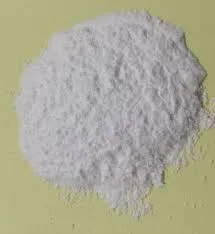- Afrikaans
- Albanian
- Amharic
- Arabic
- Armenian
- Azerbaijani
- Basque
- Belarusian
- Bengali
- Bosnian
- Bulgarian
- Catalan
- Cebuano
- Corsican
- Croatian
- Czech
- Danish
- Dutch
- English
- Esperanto
- Estonian
- Finnish
- French
- Frisian
- Galician
- Georgian
- German
- Greek
- Gujarati
- Haitian Creole
- hausa
- hawaiian
- Hebrew
- Hindi
- Miao
- Hungarian
- Icelandic
- igbo
- Indonesian
- irish
- Italian
- Japanese
- Javanese
- Kannada
- kazakh
- Khmer
- Rwandese
- Korean
- Kurdish
- Kyrgyz
- Lao
- Latin
- Latvian
- Lithuanian
- Luxembourgish
- Macedonian
- Malgashi
- Malay
- Malayalam
- Maltese
- Maori
- Marathi
- Mongolian
- Myanmar
- Nepali
- Norwegian
- Norwegian
- Occitan
- Pashto
- Persian
- Polish
- Portuguese
- Punjabi
- Romanian
- Russian
- Samoan
- Scottish Gaelic
- Serbian
- Sesotho
- Shona
- Sindhi
- Sinhala
- Slovak
- Slovenian
- Somali
- Spanish
- Sundanese
- Swahili
- Swedish
- Tagalog
- Tajik
- Tamil
- Tatar
- Telugu
- Thai
- Turkish
- Turkmen
- Ukrainian
- Urdu
- Uighur
- Uzbek
- Vietnamese
- Welsh
- Bantu
- Yiddish
- Yoruba
- Zulu
Th11 . 21, 2024 20:39 Back to list
enrofloxacin injection for dogs
Enrofloxacin Injection for Dogs An Overview
Enrofloxacin is a broad-spectrum antibacterial agent that belongs to the fluoroquinolone class of antibiotics. It is commonly used in veterinary medicine to treat a variety of bacterial infections in dogs. This powerful medication has shown efficacy against both Gram-positive and Gram-negative bacteria, making it a valuable tool for veterinarians when addressing complicated infections in canine patients.
Mechanism of Action
Enrofloxacin works by inhibiting bacterial DNA gyrase and topoisomerase IV, enzymes essential for bacterial DNA replication, transcription, and repair. By disrupting these processes, enrofloxacin effectively prevents bacterial growth and replication, allowing the dog’s immune system to control and eliminate the infection. The drug is particularly noted for its rapid bactericidal action, which is crucial in managing severe infections.
Indications for Use
Veterinarians prescribe enrofloxacin injection for dogs in various situations, including
1. Urinary Tract Infections (UTIs) Enrofloxacin is often used to treat UTIs caused by susceptible bacteria, particularly when oral therapy is not feasible.
2. Skin and Soft Tissue Infections Enrofloxacin can be effective against abscesses, cellulitis, and other skin infections.
3. Respiratory Tract Infections It is utilized in cases where bacterial pneumonia or bronchitis is diagnosed.
5. Bone and Joint Infections Enrofloxacin can penetrate bone tissue, making it a choice for treating osteomyelitis.
enrofloxacin injection for dogs

Dosage and Administration
The dosage of enrofloxacin for dogs depends on several factors, including the severity of the infection, the dog’s weight, and its overall health condition. A common dosage is 5 to 20 mg/kg given once daily, but the veterinarian will determine the most appropriate dose based on the individual case. The injection is typically administered subcutaneously (under the skin) or intravenously in a clinical setting. The treatment duration generally lasts from a few days to several weeks, depending on the type and severity of the infection.
Side Effects and Precautions
While enrofloxacin is generally well-tolerated, some dogs may experience side effects. Common adverse reactions include gastrointestinal upset, such as vomiting or diarrhea, and anorexia. Neurological effects, such as seizures or disorientation, are rare but can occur, particularly in animals with a pre-existing seizure disorder or those receiving high doses.
It is crucial to avoid the use of enrofloxacin in growing puppies, as it may adversely affect cartilage development. Additionally, caution should be exercised in dogs with known allergies to fluoroquinolones or those with liver or kidney dysfunction.
Before starting treatment with enrofloxacin, veterinarians will typically conduct a thorough history and physical examination, potentially along with diagnostic tests to identify the causative bacteria and ensure the appropriate use of antibiotics.
Resistance Concerns
One of the significant concerns with the use of antibiotics, including enrofloxacin, is the development of antibiotic resistance. When bacteria are exposed to antibiotics, they can adapt and develop resistance, making future infections harder to treat. To minimize the risk, veterinarians emphasize the importance of using enrofloxacin only when clearly indicated and ensuring that the full course of treatment is completed, even if the dog shows improvement early on.
Conclusion
Enrofloxacin injection is a vital component in the treatment of bacterial infections in dogs. Its broad-spectrum activity and rapid action can be lifesaving in emergencies. However, responsible use is essential to combat potential resistance and ensure the long-term efficacy of this important antibiotic. Pet owners should always work closely with their veterinarians to understand the best treatment options for their furry companions, promoting a healthier life for their pets while being mindful of the impact of antibiotic use on public health.
-
Guide to Oxytetracycline Injection
NewsMar.27,2025
-
Guide to Colistin Sulphate
NewsMar.27,2025
-
Gentamicin Sulfate: Uses, Price, And Key Information
NewsMar.27,2025
-
Enrofloxacin Injection: Uses, Price, And Supplier Information
NewsMar.27,2025
-
Dexamethasone Sodium Phosphate Injection: Uses, Price, And Key Information
NewsMar.27,2025
-
Albendazole Tablet: Uses, Dosage, Cost, And Key Information
NewsMar.27,2025













